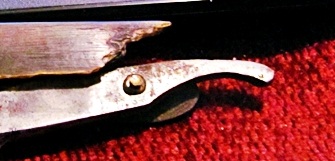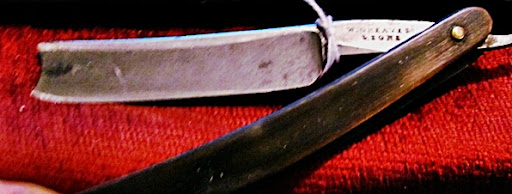I have a pre-Sheafworks W. Greaves, which puts the razor at before 1823. These are quite uncommon and I wish to preserve it as is. The problem is that the razor has beautiful ORIGINAL nearly 200 year old dark honey horn scales - they are magnificent and I do not want to replace them with anything. My problems is is that, on one side near the pivot pin, the horn is cracked in a jagged pattern and the piece is missing, so there is nothing to "glue" back. I want to preserve what is there, but I also wish to stabilize the razor to protect against greater damage.
I was wondering if there is a way to "graft" on another small piece of horn and then dye it to come close to the original, or perhaps use epoxy to create the missing area, sand it down and color it. I have never done this before so I am open to all advice.
I am including photos below. The scales and razor are MUCH more beautiful in person - the artificial light washes it out.






I was wondering if there is a way to "graft" on another small piece of horn and then dye it to come close to the original, or perhaps use epoxy to create the missing area, sand it down and color it. I have never done this before so I am open to all advice.
I am including photos below. The scales and razor are MUCH more beautiful in person - the artificial light washes it out.







